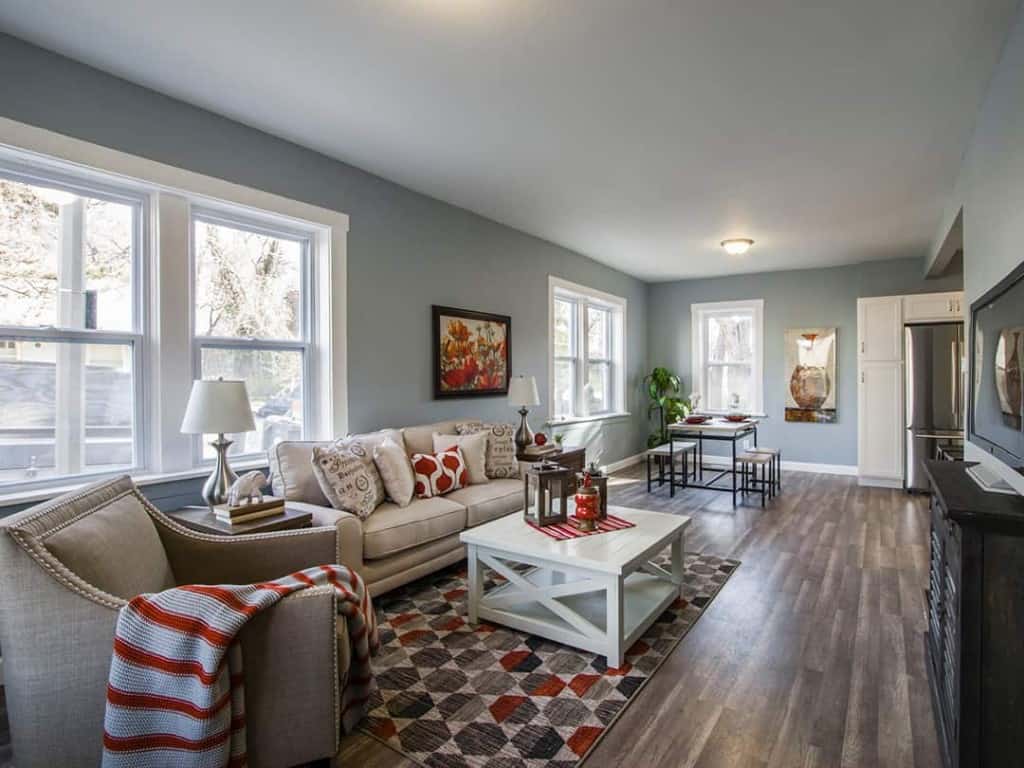Photo by Buro Millennial at Pexels
If you have extra space in your home, hosting homestay students is one of the easiest, lowest-cost side hustles to start. You don’t need any special skills, equipment, or tools, and you often already have all the furniture you need.
Getting prepared for homestay hosting’s pretty straightforward, but it’s nice have some advance knowledge—this article will take you step-by-step through the process.
Note: We live in a house we own—but even if you’re single and living in a rented apartment, you’re still a good candidate for hosting! We know many students who happily lived in a single-person home.
1. Location, location, location

First you need to determine if you’re in a location that’ll work for hosting students:
- Are there schools nearby? (Required)
- Is public transit available? (Required)
- Is entertainment/shopping within a reasonable distance? (Preferred)
- Is it a desirable travel destination? (Preferred)
Let’s go through each point in detail:
Are there schools nearby?
Do some research to see if there are schools are in your area, and if they accept international students. Your home should be less than an hour away from the school your student(s) will attend.
Check all the schools in your area, from elementary to post-secondary. Students of all ages travel abroad to study, and all these schools are in need of good hosts!
Is public transit available?
We’ve never hosted a student who rented or bought a car when they stayed with us—so if you want to host students, your home must have access to public transit!
Even a single bus line will do, as long as it’s reliable, comes frequently enough, and will get your students to school in less than an hour.
Is entertainment/shopping within a reasonable distance?
Homestay students don’t come to your town or city just to study! They’ll want to explore and have fun in their spare time. While it’s not a requirement that your home be located near entertainment and shopping, it definitely makes it more appealing.
On the flip side, if you live in a tiny town or rural area, some students are looking for this kind of experience and will happily choose your homestay. So don’t write off hosting if you live in a quiet area!
Is it a desirable travel destination?
This also isn’t a requirement, but if you live in an area that’s desirable to tourists, it’s more likely that you’ll have an ongoing stream of students to host.
However, as mentioned in the point above, there are students who want to stay in an area that’s off the beaten track. Your home may just be ideal for those students!
2. Making room

One of our student bedrooms
Each student will need their own private bedroom. Some schools do allow for double occupancy, but it’s rare.
Bedroom
The bedroom must be an actual bedroom—not a partitioned-off rec room or living room, or a storage room that you can only access by exiting the house. (Horribly, these are actual ‘bedrooms’ we’ve heard of being offered to students!)
Bathroom
You’ll also need to give your student access to a bathroom with a shower and/or tub, toilet, and sink. It doesn’t need to be private, but typically the school’s homestay policy will state that the bathroom cannot be shared by more than three people.
3. Decking it out

Every school and agency has the same basic requirements for student room furnishings:
- Bed with pillow and sheets.
- Desk, lamp, and chair.
- Dresser.
- Closet or armoire.
The room doesn’t need to look like a picture-perfect spread out of an IKEA catalogue, but it should be clean, tidy, and preferably up-to-date. Think about what you’d look for in an Airbnb and make sure your student room is an appealing place that you’d want to live in.
4. Finding students

Once you’ve determined your house is suitable for hosting, you’re ready to find students to live in those rooms! There are five different ways to find students seeking homestays:
- Language schools
- Elementary or high schools
- Homestay agencies
- Word of mouth
- Online listings
Here’s a rundown of each:
1. Language schools
Language schools are privately-run companies, and their clientele is mostly adults in their twenties. A small minority of students are under 18 or over 30, and even rarer are students who are 50+. (It was always fun to host students who were older than us! They’d invariably have lots of stories and life experiences to share.)
Language schools will usually have their own homestay department, but some outsource their homestay placements to an agency (see “Homestay agencies” below for more on agencies).
2. Elementary or high schools
Many public and private elementary and high schools accept international students, and need homestay accommodations for these students. Students range in age from 10 to 17, which means they’re minors and have different requirements than the adult students that attend language schools (more on that in a future post).
Elementary and high schools tend to use agencies to place their students, but some have their own homestay departments.
3. Homestay agencies
Homestay agencies specialize in screening hosts and placing students in homestays. They have the experience and expertise to help students gather the necessary paperwork in their home countries, and will usually offer the students more guidance and help than the homestay department at a school.
Of course, this comes at a price! Usually the student pays a hefty fee to the agency for this personalized service, and the host pays the agency a one-time finder’s fee. For us, this fee was usually around $50.
As a host, there’s not much difference between working directly with a school versus an agency, so have no worries about working with one or the other.
4. Word of mouth
Word of mouth referrals from past students always led to our best homestays—partly because of the personal connection, and also because referrals tend to lead to a good match. The longer you host, and the better you treat your students, the more likely it is that they’ll refer friends and family to you in the future.
Many of our students came to us this way. Sometimes, a student would refer a friend to us after they left our home—often years later! Other times, while living with us, our student would refer a friend at school who was unhappy in their homestay and wanted to move.
About 10% of the students who stayed with us came through referrals, but that percent could have been higher—we often had to turn down referrals because we were at capacity.
Referrals aren’t the most reliable, consistent source of students, but they definitely can’t be ignored!
5. Online listings
Posting on Craigslist and other sites is something we’ve never pursued, but we know of students who have found their own homestays this way. It’s an easy way to reach many students, and from what I’ve seen, you can charge a little bit more. This is because schools and agencies usually take a monthly cut from what the student pays them. Since you’re working directly with a student, there’s no middleman taking a cut.
However, you should know why we chose not to go this route. Despite earning less with schools and agencies, we felt the backup assistance they provided was worth it. Issues with students are rare, but when you do have problems, a responsive homestay coordinator is worth their weight in gold!
5. Making contact

Photo by rawpixel at Unsplash
Once you’ve narrowed down the schools and agencies in your area, find out who their homestay coordinator is, and contact them directly. Keep in mind: even your initial inquiry makes an impression on this person—so be polite, friendly, and cheerful!
Typically, the coordinator will send you a list of basic requirements, then ask you to fill out an application form. Often, you’ll also be asked to complete a criminal record check—even if you’re hosting adults.
Pro tip: At our RCMP (police) detachment, we could request multiple copies of our record checks for one price. If you’re applying for other schools, save money by requesting all the copies you need at once!
6. The application

Photo by rawpixel at Unsplash
This is your next chance to make a good impression on the homestay coordinator. A typical homestay application form doesn’t just cover basic information. You’ll usually need to go into detail about your day-to-day family life and why you want to host students.
This area of the application form is where you can really make yourself stand out. Focus on the experiences you want to share with your students and how you’ll make them feel welcome in your home.
Think about how you’d want to be treated if you were in a homestay. Be genuine and really consider your true reasons for hosting students. If your heart is in the right place, it will come through in your answers.
The screening and application process usually takes one to two weeks. Once you’ve met all the basic requirements and your application has been reviewed and accepted, the coordinator will make arrangements to do a home visit and in-person interview.
7. The home visit

Photo by Sarah Jane at Pexels
This is your time to shine (literally)! You’ll want to pull out all the stops for the home visit. If your home is inviting, clean, and tidy, you’ll instantly rise to the top 10% of homestay hosts. (Honestly—there are some truly bad hosts out there.)
If you yourself are also inviting, clean, and tidy—that puts you in the top 5%! Finally, if your partner and kids shine themselves up too—well then, you’re basically a shoo-in!
All joking aside—this is a real interview, just like any other job. This is the only time the coordinator will ever see your home, and it’s what they’ll remember even years from now. So do your best to make a good impression!
But (I’m going to be contrarian here) don’t sweat it or get overly nervous. The truth is, it’s rare to come across good homestay hosts. If you’ve made it to this stage, and you’ve ensured that you and your home are presentable, it’s basically a guarantee that you’ll be accepted as a host.
So, although I’m encouraging you to make a good show of it, try to relax and make the experience pleasant and enjoyable. Every homestay coordinator we’ve met has been kind and easy to work with. Their job is not to pick apart your family or your home.
They just need to make sure you’re who you said you are in the application form, that your home really does meet the requirements, and that their students will be happy and comfortable living with you.
And that’s it—the home visit is the last step in becoming a homestay host! It’ll usually take a few days to a week for the coordinator to offer you your first student. Then you’ll be a full-fledged host!
8. I’m a host—now what?!

Not sure what to do next? Keep reading—I’ll fill you in! (Photo by Sharon McCutcheon on Unsplash)
Once a student has been placed with you, you’ll typically have anywhere from a week to a couple of months to prepare for their arrival.
Take this time to ensure you’re ready to host them successfully. It’s not hard—most of it’s just common sense. But it still helps to have some tips on hand, and that’s what I’m here to help with!
Want to know more?
The next article will guide you through your first weeks as a host (coming soon!) For now, read through the rest of the Homestay Series to learn more about homestay hosting.
And as always, feel free to comment below if you have questions, feedback, or topic suggestions. I’m happy to help!

COMING SOON: I’m Getting a Homestay Student—Now What?!
With over ten years of experience, and more than 100 students hosted, we’ve learned a thing or two about getting a new student settled in!
Wondering how much we earn hosting homestay students? Curious about how hosts get paid? Is hosting even worth doing? I’ll share the numbers and tell all.
Go back to The Homestay Series homepage to jump to another article.
Support this blog
If you liked this article and want more content like this, please support this blog by sharing it! Not only does it help spread the FIRE, but it lets me know what content you find most useful. (Which encourages me to write more of it!)
You can also support this blog by visiting my recommendations page and purchasing through the links. Note that not every link is an affiliate link—some are just favourite products and services that I want to share. 🙂
As always, however you show your support for this blog—THANK YOU!







No Comments